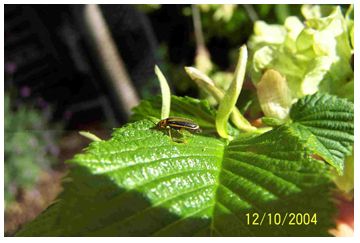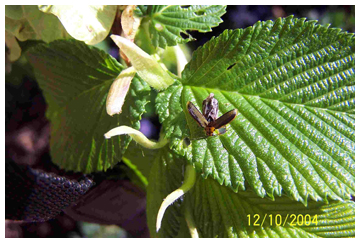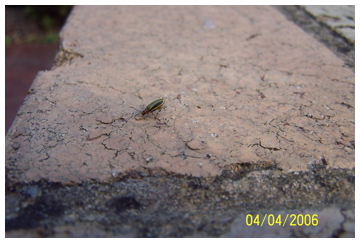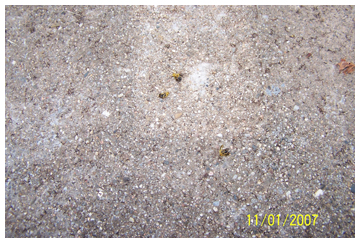What Happens Post Treatment
Beetles need to ingest a small amount of leaf material for the chemical to kill them. You will see dead and dying beetles on paved areas indicating that things are proceeding as planned.
At the beginning of the season clients are often concerned when they see shot hole and beetle activity in their tree. The following images are relatively self explanatory.

After ingestion the insect stops feeding. Very little leaf material is required as the chemical is fatal to beetles at levels in the microgram range. Beetles will raise the rear of their abdomen high – this is a typical symptom.

Separating wing cases and tremors are terminal symptoms prior to nervous system shutdown. (note the shot hole near beetle.)

Any beetles that fall will die; as the chemical takes effect they often drag their hind legs and are lethargic and lack coordination.

Dying beetles are easily seen on paved surfaces; laying sheets or parking vehicles under the canopy will reveal the same.
In the warmer months tree injected elms will start to bring adult beetles down in as little as 8 minutes post treatment, but larvae can take between 30-45 minutes depending on the temperature.
Insecticides such as Ema-ject® and to a lesser extent imidacloprid are the only reliable registered chemistries that work fast and persist for long periods within the tree.
Soil injected irrigated trees using the same chemistry take a minimum of 26 days to achieve the same outcome, larger trees at 100cm can take up 70 days. Translocation and kill times tend to be more uniform with tree injection and no irrigation is required.
All our trialled 100cm-plus trees had beetles falling within 8 minutes during summer. If larvae are present, the treatment has not been successful and the tree needs re-treatment. You need to contact the company who performed the work.






